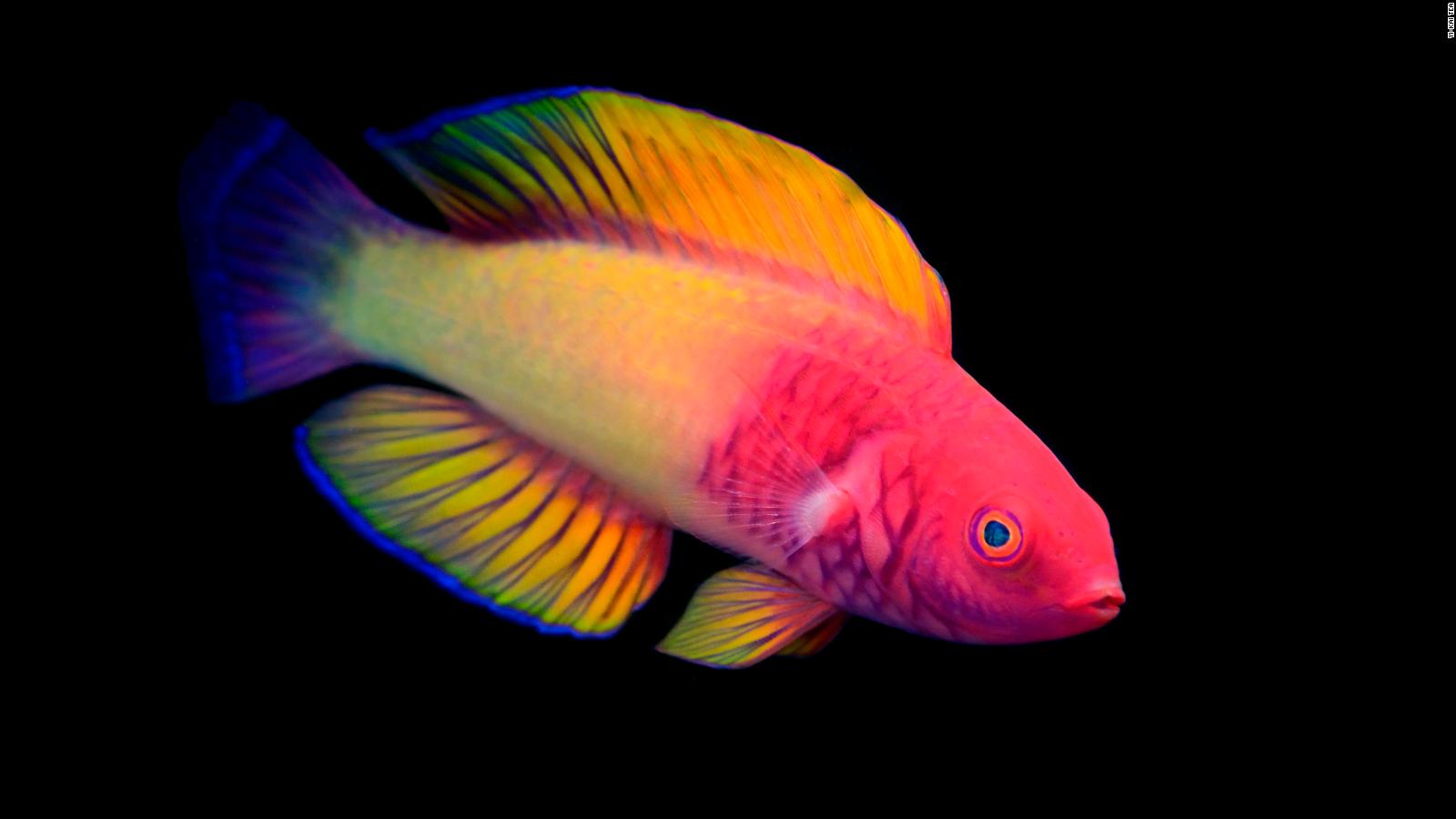(CNN) — Hundreds of meters below the ocean surface, somewhere between the dark ocean floor and the bright blue water lies the twilight zone.
It’s an unknown world, but coral reefs thrive in some tropical and subtropical waters. Few scientists have ventured into these deep reefs, technically known as mesophotic coral ecosystems, meaning “intermediate light,” and many assumed that few species could exist there because of the lack of light and cool temperatures.
But one scientist has delved into the depths to show that there is more life out there than previously thought.
“If you look up close, it’s a very colorful ecosystem,” says Luis Rocha, a Brazilian ichthyologist (a person who studies fish) and co-director of the California Academy of Sciences’ Hope for Reefs Initiative. “There are many species of fish, many of which are unknown.”

Despite its darkness, the twilight zone is home to fish with a variety of colors, such as Sirhilaprus waganda.
Rocha, who focuses on marine life at depths of 60 to 152 meters, is drawn to twilight zone reefs for their mystery. “Every dive we make to those depths leads to a new discovery,” he says.
To date, it has identified about 30 new species, from the purple angelfish named after the mythical nation of Wakanda, to Dosanoides Aphrodite, a pink and yellow reef fish named after the Greek goddess of love. But his research in the deep sea has threatened these reefs and the rainbow species that live on them. Your job is to protect them.

Officially recognized as a new species in 2019, Sirhilaprus wakanda is found in Zanzibar and is known as the Vibranium fairy fish, named after the fictional East African country of Wakanda, home of the superhero Black Panther.
Dive
Entering the twilight zone is not easy. While this can be achieved with a submarine, studying fish that come in and out of the shadows is a clumsy way, says Rocha, who likens it to studying birds in the rainforest from a helicopter.
Instead, he dives, but he goes down, and he is very dangerous. Recreational diving There is a 40 meter range For safety reasons, but Rocha dives up to 150 meters. It requires deep concentration, intense technical training and strong willpower.
“What’s really special about this research is that only a handful of scientists in the world are doing it,” he says.
Rocha usually dives in a team with two scientists and a safety officer. They spend hours preparing the equipment, making sure every part works well and is equipped to deal with underwater emergencies. Divers must wear breathing apparatus Re-breathingThe diver recirculates the exhaust gas, and a special breathing gas containing helium is safe for deep diving.

Rocha and a team of divers prepare to explore the twilight zone reefs of the Maldives during a recent expedition.
It only takes 10 to 15 minutes to go down, Rocha says, depending on how steep the cliffs are, but the climb can take five to six hours to allow the body to decompose.
All of those efforts allow him to spend seven to ten minutes at maximum depth, where he and his crew search for fish, collect DNA samples and record the number of species in an area. If they think they’ve discovered a new species, they usually trap it and bring it to the surface in a decompression chamber so they can study the sample back in the lab.
Despite having done it dozens of times, Rocha still feels nervous before each dive.
The deeper you go, the darker and colder the water gets, he says. “But when we got there, we knew why we were there. When you see something that no one has ever seen before, it’s absolutely amazing.”

The striped fluorescent Aphrodite Tosanoides, commonly known as Anthias Aphrodite, was discovered in 2017 in Sao Paulo Rocks, Brazil. Rocha and colleague Hudson Pinhero named it after the ancient Greek goddess of love and beauty, enchanted by the elegant species.
Human influences are profound
Although the twilight zone has been explored by far fewer people, the effects of human activity are still evident.
Deep-sea coral reefs were previously thought to provide shelters that are less affected by human development and climate change. But rock This proved to be a mistake: “One of our first findings is that deep reefs are not actually refuges for shallow reef organisms. They are affected almost as much as shallow reefs,” he says.
Rocha has found plastic debris and fishing gear in some deep reefs and has seen the impact of overfishing and climate change. Although there is not yet enough data to determine the extent of damage compared to shallower reefs, it is clear that water temperatures in deeper areas are also warming and bleaching the reefs, he says.
Rocha hopes her research will help educate people about the twilight zone and take action to protect it. Work with legislators to protect marine protected areas where these deep reefs are found. In 2019, participated in the Conservation of Hope for Reefs initiative Coral reef habitats on Marikaban Islandin the Philippines, and served as the basis for establishing his research the previous year Two protected areas in Brazil.
Rocha works closely with local communities, collaborating with local researchers and assigning local names to newly discovered species. For example, earlier this year he and Maldivian biologist Ahmed Najeeb discovered a rainbow-colored fish they named Cirhilaprus finfenma, or rose-veil fairyfish, after the Maldivian national flower, the pink rose called finfenma. Rocha believes it will “give ownership to local people”.
Rocha hopes that technology will soon advance to the point where more people can access the twilight zone and that more species will be discovered. But their main goal is that when they do, the ecosystems will remain the same as they are now.
“I don’t think doing science is enough,” he says. “We take many, many photographs… and bring those stories to the surface and share them with as many people as possible.”
“Often, when people realize these reefs exist, they move to protect them,” he adds.





